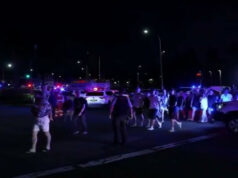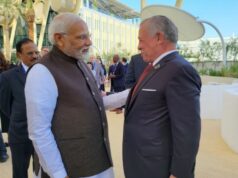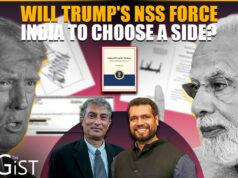War Lessons From Ukraine And Gaza
The Russia-Ukraine war will complete three years later this week. The conflict in Gaza, now in its second year, has got a breather of sorts in the form of a ceasefire deal. A war may not have any winners in the real sense but it holds out a trove of lessons.
One War, Many Lessons
Each country will derive different lessons from the same conflict, says former air chief Air Chief Marshal VR Chaudhari (Retd). He cites the first Gulf War of 1991 to drive home his point. The U.S. and its allies amassed forces across the borders of Iraq in quick time. Their strategy was relentless use of airpower followed by mopping up actions by the Army. The lesson for them: With strategic lift capability, it is easy to move forces and overrun the adversary.
On the other hand, Russia or China may have learnt how to deal with an adversary able to mobilise large forces rapidly. They bolstered their anti-access/area denial (A2/AD) capabilities.
Russia’s Strategic Mindset
After the break-up of Soviet Union, Russia faced a lot of minor conflicts on its borders. There were two schools of thought within the Russian armed forces on how to tackle those.
One was to deploy small specialised forces (Spetsnaz as they call it). On the other hand, NATO forces were continuing to build up along the Baltics and in European nations. So a large army was needed to counter any likely from there.
When it came to the special operations in Ukraine, I would hazard a guess to say it was a combination of both these thought processes, the former air chief told StratNews Global.
It is important to have a common thread flowing through the armed forces. If you have an intermingling of two schools of thought, it may not always result in success, he added.
The Gerasimov Doctrine
According to Valery Gerasimov, a Russian General who served as Chief of the General Staff, one can win a war by non-kinetic means such as subversion, information warfare. This school of thought advocated after the break-up of Soviet Union was popular among Russian thinkers.
Russia’s broad attack plan for Ukraine had four thrust axes. The one from the Belarusian side towards Kyiv included special forces and airborne forces to land and take over a commercial airfield outside Kyiv and thereafter clearing the way for the ground forces.
“But they had to give up due to stiff opposition, which they did not anticipate. Traditionally, every citadel is protected by all means. Even Indian history is replete with examples where forts and citadels have been held to the last man. So the plan to breach a city like Kyiv was probably not the right strategy.”
War Centre Of Gravity Changing
According to the five-ring theory put forth by Colonel John Borden, a former U.S. Air Force officer, the leadership remains the centre while the fielded military forces make up the outermost layer. There are two ways of breaching the layers: by breaking layer after layer; alternatively, air power can be used to target all layers simultaneously.
“Today the concept is changing rapidly. In my opinion, critical information infrastructure is the centre of gravity. So a breakdown of communication between the military forces, between politicians and the military is what I would read as the new centre of gravity.”
War Lessons From Ukraine
The Ukrainians were aware of the asymmetry in terms of numbers and force levels. So they primarily used information warfare tools and new age technologies such as AI-based systems. A system called Delta aggregates target information, personal information of Russian armed forces and so on. The armoured columns moving into Kyiv were stopped primarily by a bunch of civilians using drones, says ACM Chaudhari (Retd).
The Russian Military
The Russian army is basically conscript-based. Secondly, there’s no equality among the three services. The Army is more superior in numbers, in terms of people who rise up the ranks. So the thought process and the planning definitely would have been done by this handful of people, according to ACM Chaudhari (Retd). In some of the battles there was complete lack of understanding of requirement of airpower, resulting in huge losses, he adds.
Deterrence As Israeli Strategy
The Israeli strategy has always been that of deterrence through maintaining superior airpower and armoured or land forces. They perceive threats from Arab nation states and probably thought that their deterrence will also hold for lower level, non-conventional conflicts. But what surprised them was that non-state actors broke through their deterrence with small attacks. That can be attributed to intelligence failure. Also, if you use deterrence as strategy, it should cater for all domains of likely conflict, says ACM Chaudhari (Retd).
Gaza War: Proliferation Of Drones
There has been proliferation of cheap drones in recent conflicts. The Israelis are confident of maintaining air superiority against conventional forces but no nation can afford to keep launching half a million dollar worth of missile against every drone. What is required in future is cheap, single shot directed energy weapons as a cheaper alternative to launching missiles, says ACM Chaudhari (Retd).
Information & Decision Superiority
The primary lesson is information superiority and then decision superiority, he added. The target is not going to remain static so a quick decision has to be made to strike. AI tools can help determine if the target is genuine. One needs to cut down on the sensor to shooter time. Continuous surveillance is an advantage but to do some action based on that is important, according to the former air chief.
Technology-Led Wars
Technology is playing a key role in contemporary conflicts. And how best one can capitalise on technology will determine who will be the winner. In short and swift campaigns, tech superiority will make a difference but numbers will be key in long-standing conflicts, says ACM Chaudhari (Retd).
Nitin A. Gokhale is a media entrepreneur, one of South Asia's leading strategic affairs analyst and author of over a dozen books so far on military history, insurgencies and wars.
Starting his career in journalism in 1983, he has since led teams of journalists across media platforms.
A specialist in conflict coverage, Gokhale has covered the insurgencies in India’s North-East, the 1999 Kargil conflict and Sri Lanka’s Eelam War IV between 2006-2009.
Gokhale now travels across the globe to speak at seminars and conferences, and lecture at India’s premier defence colleges. He has founded three niche portals, Bharatshakti.in, stratnewsglobal.com and Interstellar.news.




